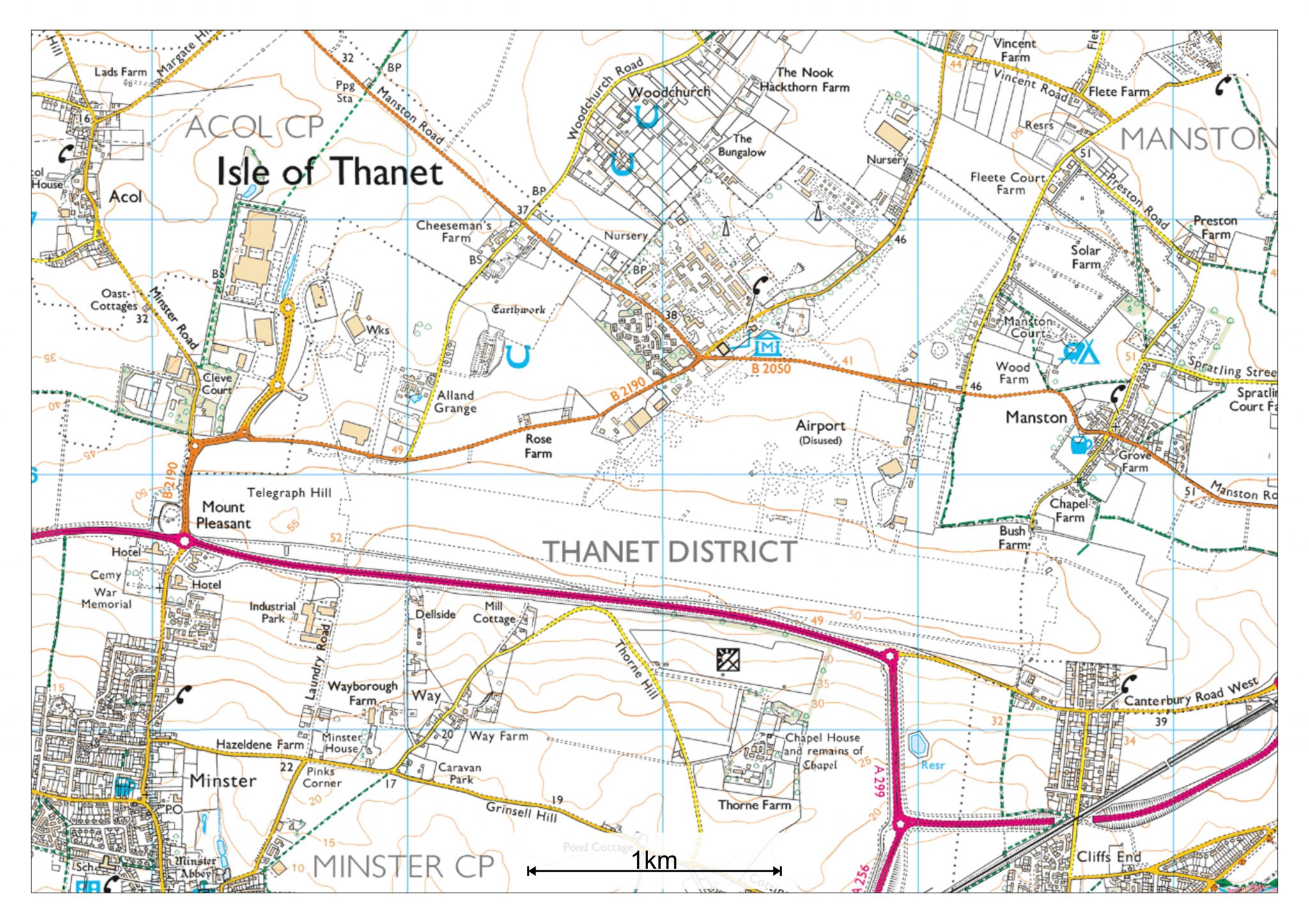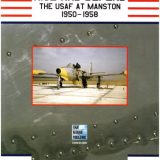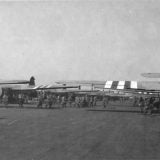This page is intended to be a central location for facts and photos concerning the layout and buildings of Manston. Lots more updates to come!

29th May 1916
RNAS (Royal Naval Air Station) Manston becomes fully operational. No.3 Wing moves from Detling to RNAS Manston with two BE2c, one Short Biplane, four Sopwith 1½ Strutters and a Curtiss Biplane under the command of Lieutenant HP Smyth-Osbourne.
Up to this time it was merely a small aerodrome with Bessoneau accomodation but a proposal was made for Manston to be enlarged and made a more permanent air Station. Hangers suitable for large bombers, amongst others were erected during the latter part of 1916.

20th September 1917
Various works and additions of buildings authorised, including construction of a permanent building for the Handley Page bombers. These may have included the ‘underground’ hangers, which were really half underground, but could have led to the rumours that continue to today.
8th January 1918
Air Department decides to make Manston an immense RNAS training establishment.
1st April 1918
Three day-bombing training squadrons move into new buildings after work completed on large permanent hangers, Bessoneau underground hangers, huge workshop and accommodation for 270 officers and 3,355 men.
5th July 1918
Owner of Pouce’s House wrote to attempt to recover the property commandeered for the airfield in 1916, but was refused.


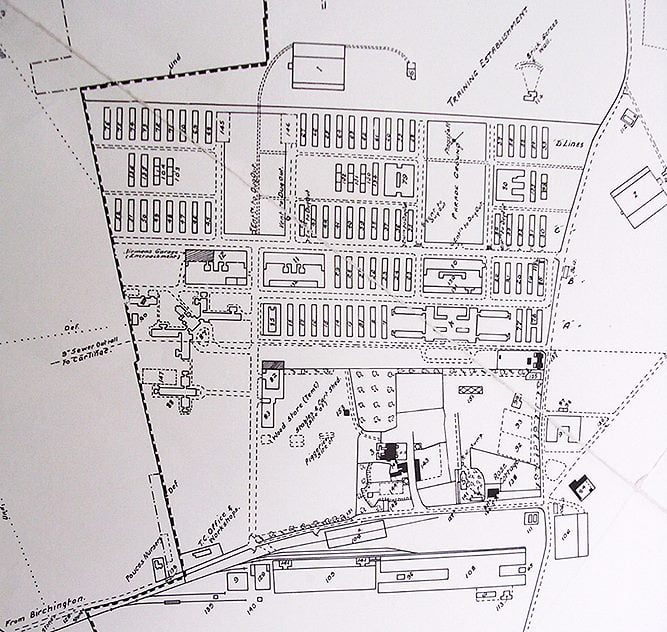
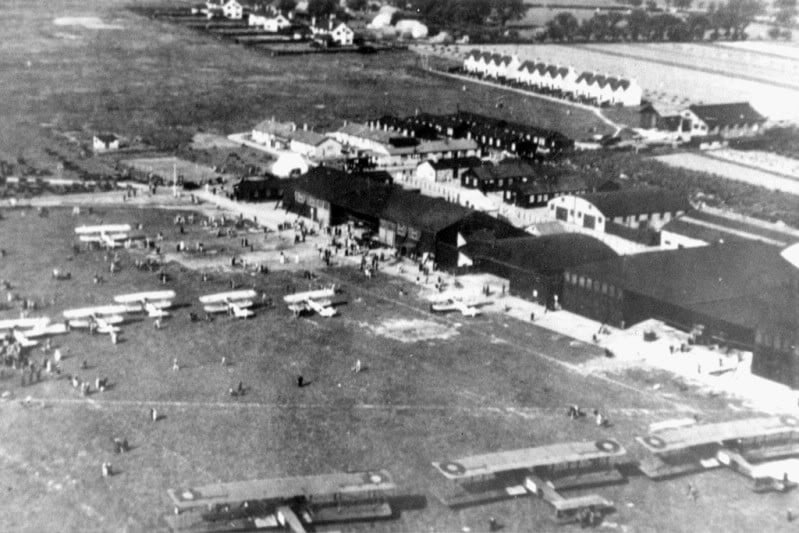






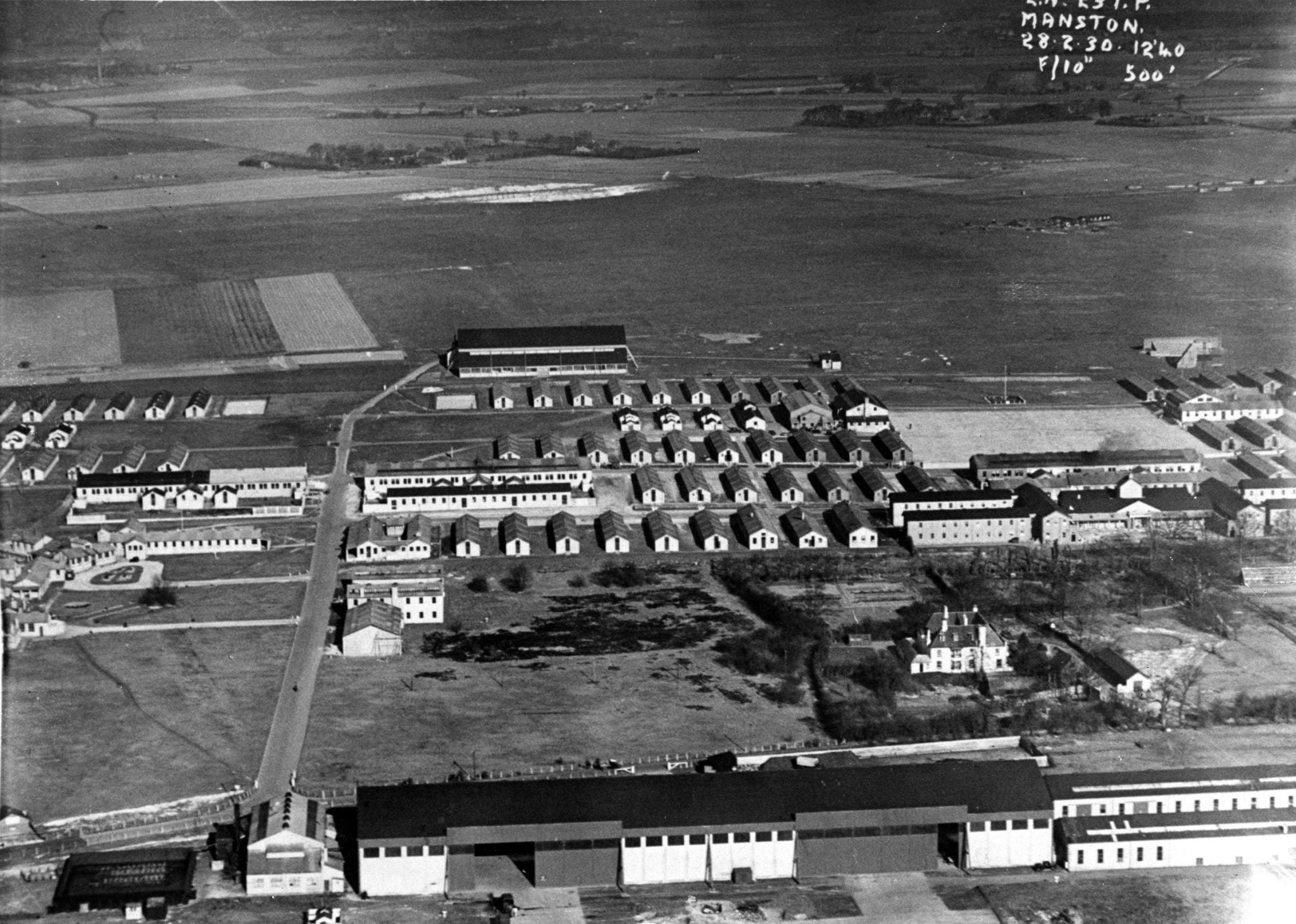
Illustrated London News – Saturday 16 December 1939
The air-photographs reproduced on this and the following pages appeared recently in a German periodical as having been taken by German reconnaissance ‘planes flying over England. There appears to be no reason why they should not be genuine, for solitary German reconnaissance ‘planes are known to have flown over on various occasions since the war. The R.A.F. have, of course, taken quantities of photographs of different parts of Germany, though few of them have been permitted to be published by our authorities.
The German interpretation of the photograph of Manston Aerodrome (near Ramsgate) runs: A: fighter ‘planes on the flying-field. B: hangars. C: barracks. D: walled-in magazines. E: air-raid shelters. F: radio-masts. G: camouflage marking on the aerodrome.
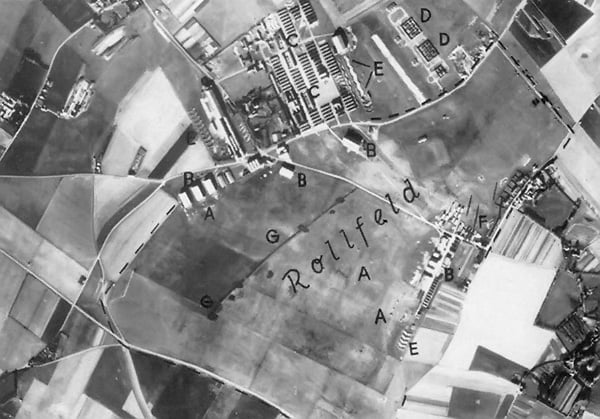
Circa August 1940
5th October 1941
Wing Commander Tom Gleave arrives at Manston with orders to make it an operational station. Before leaving in September 1942, he campaigned for the long, wide runway of concrete or tarmac to save returning damaged aircraft.
5th June 1942

13th July 1942
Luftwaffe reconnaissance photos taken this day that would be published in October 1942 as part of a Luftwaffe Target Folder.

Original Source: https://www.iwm.org.uk/collections/item/object/1504009176
28th August 1942
Fifty six emergency landings on the night of 28th August 1942 left devastation that would lead to the approval for the new runway to be built. The Station Commander had already seen the increasing numbers of emergency landings increasing, with damaged aircraft of Bomber Command trying to make it to Manston in every kind on imaginable trouble. At the time, the airfield was comparatively limited for such landings, with many aircraft overshooting, adding to the damage to them, increasing casualties and also damaging the airfield and buildings. The undulating surface made matters worse, although Wing Commander Gleave had already pleaded for the construction of a really large runway with “lead in” lights, so far he had not been successful. The scene of carnage eventually led to the approval of the new runway. https://www.manstonhistory.org.uk/on-this-day-28th-august-1942/
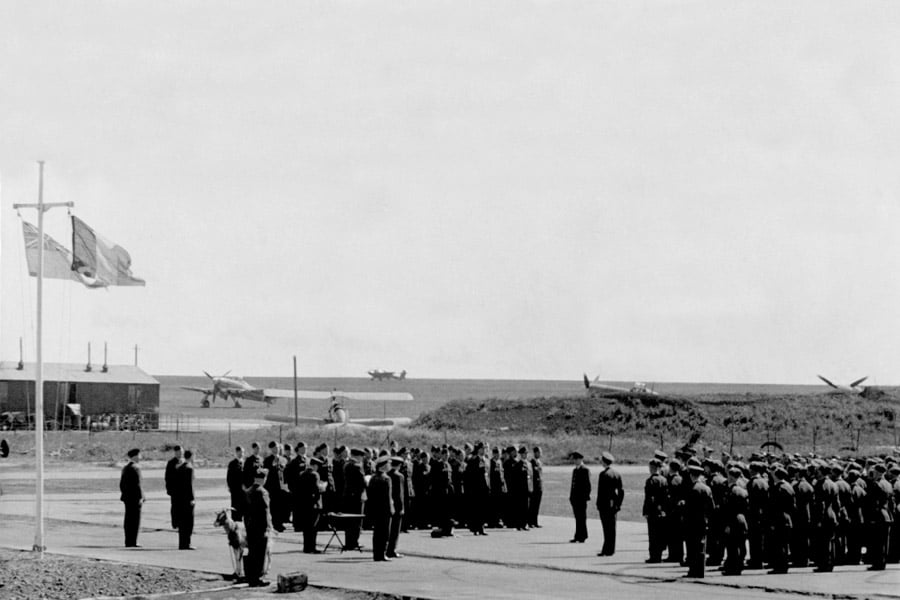
15th June 1943
Work commenced on the new runway, removing some 370,000 cubic yards of soil and replacing with 379,000 square yards of concrete, laid seven inches thick.
7th August 1943
From No.609 Sqn records: “It being P/O Demoulins and the IO’s turn to take Liberty Tiger Moth for a 48, they land at Manston (now unrecognisable owing to the earthworks of new runway construction) and attend a party at Doone House to which 609 has been invited, as does F/O Geerts, who arrives in the Hurricane.”
5th April (or May) 1944
New runway at Manston brought into operation. In first three weeks in operation, 56 emergency landings took place
19th April 1944
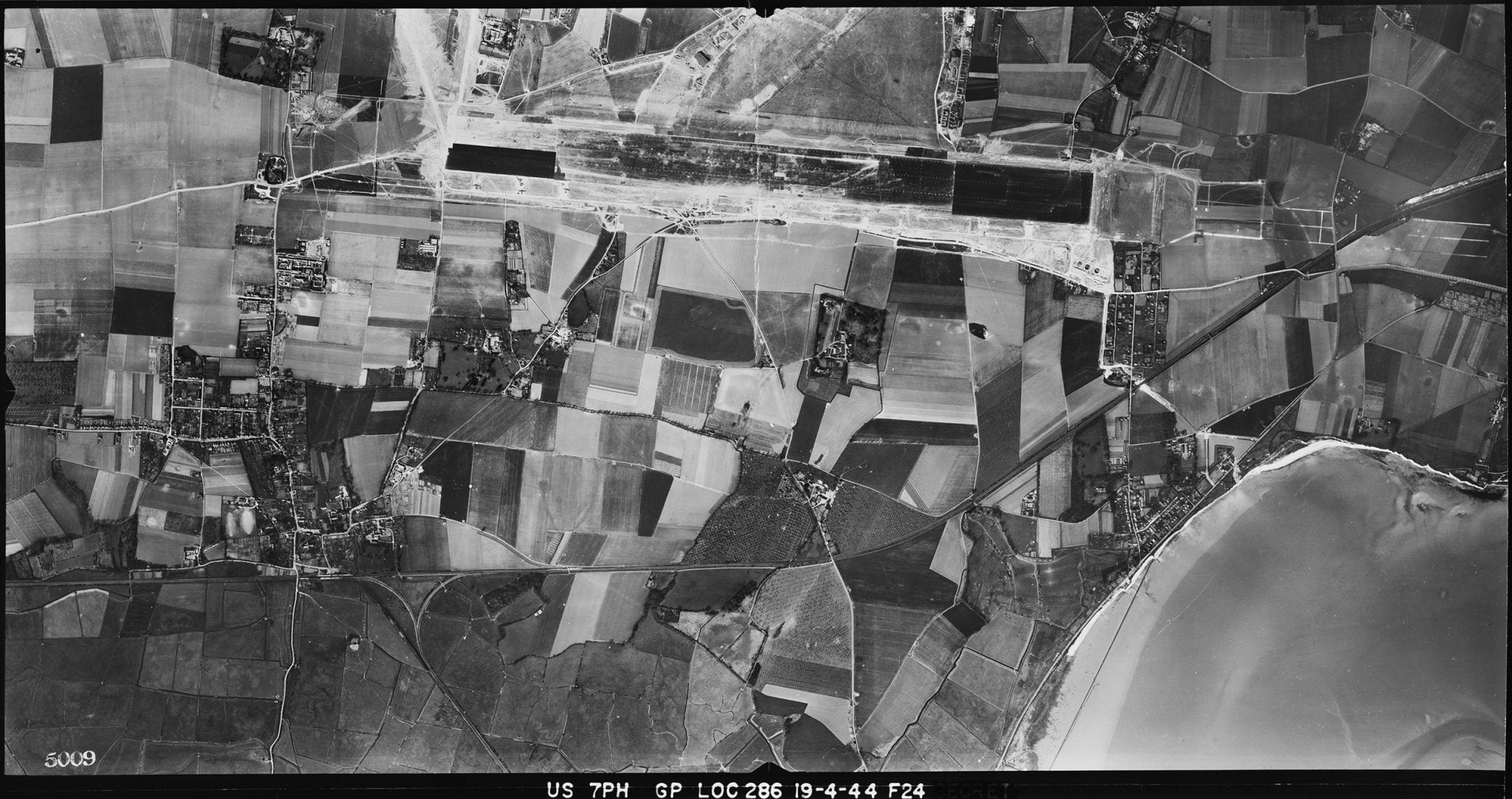

1944



Original Source: https://www.iwm.org.uk/collections/item/object/205455187
1955
Date Unknown
1956

Early 1960s
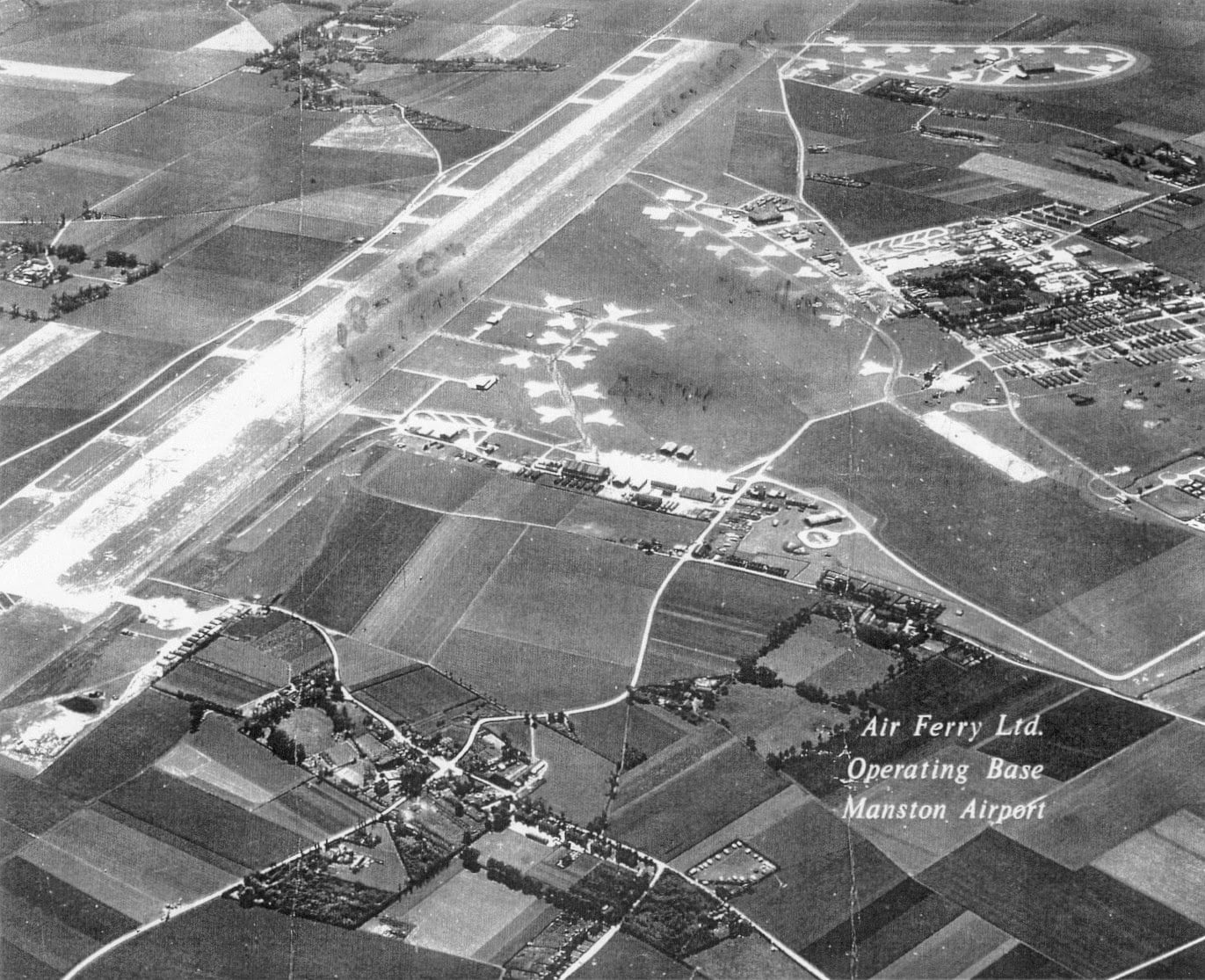

2017
